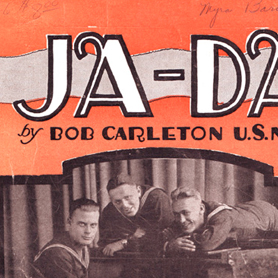Elizabeth Carey Smith
Graphic Designer, Type Designer, Custom Letterer
Primary design concentrations:
Type-centric graphic design, type design
Most preferred tools for designing:
How and why did you choose to become a designer?
As a kid, I hadn’t heard of the term ‘graphic design’. But I cycled between drawing and practicing my penmanship incessantly and reading books and scrolling through the font list in Aldus PageMaker on our very early Mac, so in hindsight, it was pretty natural that I would pool all those interests together. When I was 15, the closest thing I could find in the ‘careers’ section of our high school library was “commercial artist” and I even wrote a paper on why I thought I’d be good at that. It wasn’t really until I was part way through a French Literature degree in college that I realized I was traveling down the wrong path. I dropped out of that university and enrolled soon after at a small art college, and never looked back.
What are some of the challenges you encounter as a designer and how do you deal with them?
The primary challenge is explaining what I do to non-designers well enough to get referrals for work. I’ve been a professional graphic designer for ten years now and as I’ve delved deeper and deeper into niches that interest me, it’s become more difficult to pull out of that and tell the average business person how what I do can help their organization. That said, I pride myself on good communication—I can be quite good at engaging people with my thinking, whether it’s a client or a student, so I do have moments of clarity.
What is your definition of an “elegant solution,” that is, good design?
An elegant solution is one that shows maturity and has substance and longevity. That doesn’t mean that it has to be terribly serious, but a lot of design is disposable because it relies solely on its form, communicating little of its content. It may get instant gratification for the designer and lots of RTs on Twitter, but I’m not a shallow person, and I tend to be drawn to design that feels cerebral and multi-dimensional. I don’t like to believe that what I do for a living is trivial. I want to create work that lasts.
From skills to values, what makes a designer successful?
Being able to express oneself verbally. Knowing how to work with other people and see other points of view. Not envisioning the end product before starting a project…at least, these are what I want indicators of success to be. There are plenty of designers who are considered successful who don’t adhere to my idea of success. Anyway, I don’t really like that word. When I feel enriched by what I do and think, those are the days when I fee, if not successful—fulfilled.
How do you stay motivated and grow personally and professionally as a designer?
I rarely have a problem staying motivated. More often, it’s finding the time and resources to follow through on my best ideas. Inherently, I’m very critical, so all of my work, even work I just finished five minutes ago, becomes subject to my own scrutiny, and I am immediately thinking about how to push an idea or a form further next time. I also attend a lot of events in the type world, so meeting up regularly with other makers pushes me to make better things.
For those aspiring to become a designer, whatever the discipline, what is your advice?
Learn about being a business person. I dread having to be one, but it’s necessary. I read recently that every great designer is also a great salesperson, and I believe that to be true. Ultimately, you need to have work, and, therefore, resources to make bigger and better things. So to get that work and clients, you need to know how to present yourself and your wares.
What is your quest in design, from a professional practice, education or evolution standpoint?
In hindsight, it seems like I’m just always trying to be better at what I do, trying to make things that are unique and that move someone or teach someone. I am always working for that invisible but universal audience—not in terms of ‘what do they want?’ but ‘what do I want them to want?’ There’s a big difference, because I do firstly make work that I am pleased with. I need to love it, then I need to see that they love it too.
Previous: Anthony Levin-Decanini | Next: Ana Kraš

Support this solo initiative
What began as a collection of links has evolved into a comprehensive archive committed to creative culture—offering so far 395 interviews with under-the-radar Artists, Designers & Makers, in addition to 202 write-ups across events, books, movies, more. Free to explore. Free from ads. If you gain a level of motivation, knowledge, even delight, from Design Feast, please support on Patreon. Thanks for your consideration!
Wishing you continual success,
Nate Burgos, Content Creator & Publisher
Comments
There are no comments yet.
Leave Your Comment